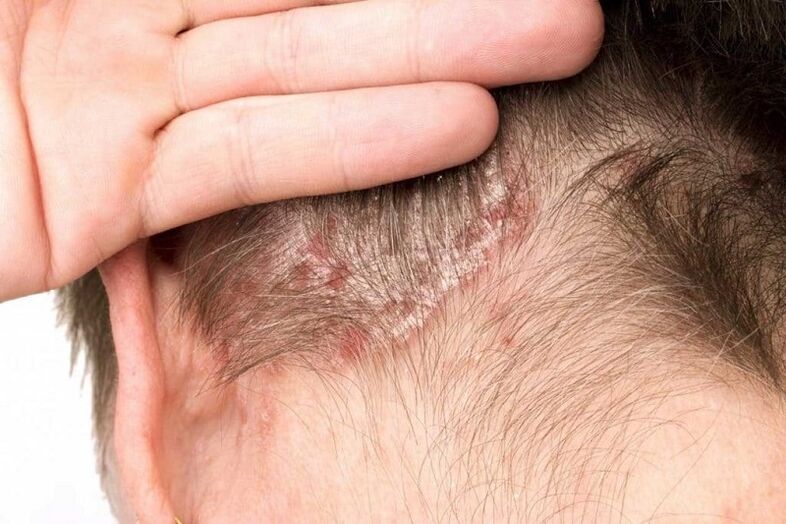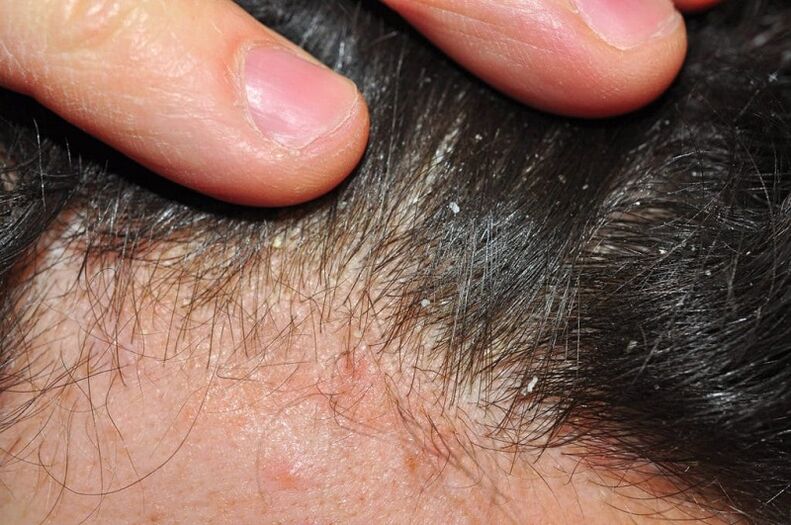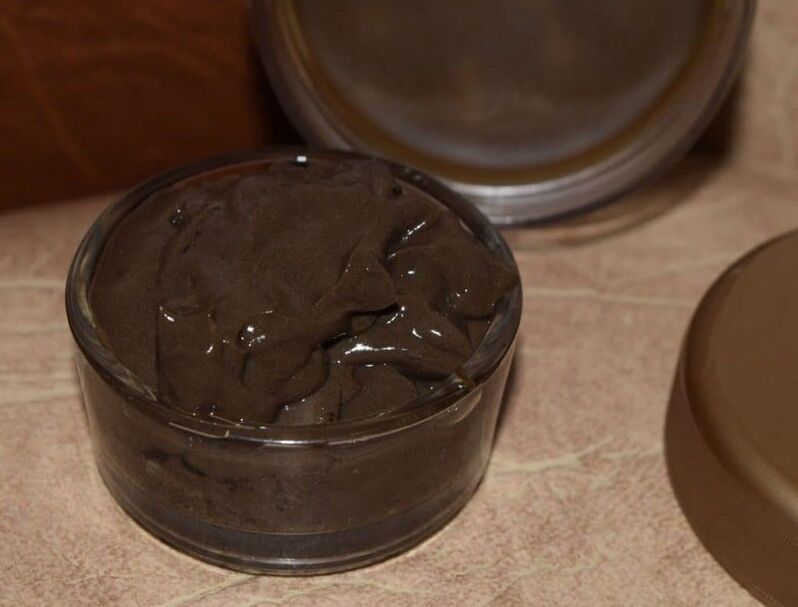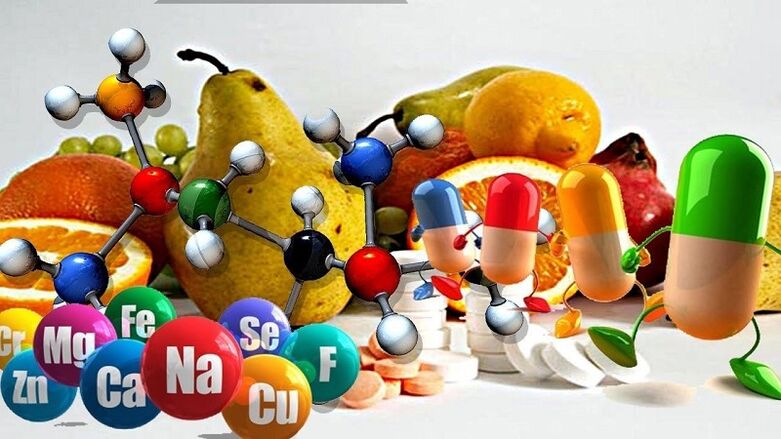Psoriasis is a chronic inflammatory disease of the epidermis. The pathology is not contagious, since it is provoked not by infectious causes, but by an autoimmune disease. The disease is characterized by excessive division of skin cells, which leads to the formation of dense plaques. Inflammation affects any part of the body. Scalp psoriasis is a fairly common form of the disease. The peculiarity of the localization of rashes on the head is the complexity of the treatment. This form of psoriasis often becomes the cause of the development of complexes and dissatisfaction with oneself, as it is visible to others. The elements of the rash are unsightly and require prompt treatment.
The reasons for the development of the disease
Scalp psoriasis develops for the same reasons as bodily skin damage. Factors acting as an impetus for the appearance of plaques on the skin can be:
- stress;
- seborrhea;
- prolonged exposure to the sun;
- allergic reaction;
- damage to the skin;
- decreased immunity.

Stress makes many illnesses worse, including psoriasis.
Regardless of the reasons that triggered the development of the first episode of the disease, psoriasis is always accompanied by excessive division of epidermal cells, which explains the appearance of the elements of the rash. This is due to the body's autoimmune response, which causes an immune attack on the skin cells.
The disease is characterized by an undulating course with periods of exacerbation and remission. Doctors often call the pathology a psychosomatic disorder, since exacerbations of psoriasis are directly related to the psycho-emotional state of the patient.
Stress, lack of sleep, fatigue, lack of vitamins in the body can cause an extraordinary exacerbation and the appearance of new elements of the rash.
Despite the repellent appearance of the rash, psoriasis is not contagious at all, as it is the result of internal disorders, but not infections or viruses.
Although doctors have not yet identified the exact cause of the development of the disease, most tend to believe that psoriasis is the result of systemic disorders in the body caused by an imbalance of hormones, instability of the nervous system, andmetabolic processes. , malnutrition and a cold climate.
Symptoms of psoriasis
Psoriasis on the head begins with the appearance of dense nodules, invisible from the outside. Over time, the nodules merge with each other, forming islands. The skin around the rash clusters swells and becomes inflamed, dry scabs and scaly areas may appear.
Over time, the nodules become dense and flat, the peeling begins on their surface with the formation of large scales, dandruff-like in shape and structure.
Scalp psoriasis is most often localized in the temporal region, behind the ears, on the neck, and along the hairline. Often, peels and plaques form along the parting.
The disease can appear at any age. Most often, the first episode of psoriasis occurs either during puberty and before the age of 20, or after the age of 35.
Scalp psoriasis is classified according to the severity of the symptoms. The mild form of the disease is characterized by the formation of isolated foci of inflammation and moderate scaling. Rashes with this form are not striking and respond well to drug therapy.
For a severe course of psoriasis on the head, a photo of which allows you to assess the severity of symptoms, the entire head, area of hair growth and the back of the neck are characteristic. The elements of the rash are large, the scales are very large and visible to the naked eye.

Scalp psoriasis can affect both the scalp and the skin around it.
Timely diagnosis plays an important role in scalp psoriasis. An experienced dermatologist will already make a diagnosis during an external examination of the patient. The difficulty is that many patients do not go to the doctor, not knowing what psoriasis looks like on the scalp and mistaking it for dandruff. It is important to remember that early stage psoriasis on the head responds well enough to treatment, however, lack of timely treatment will inevitably lead to disease progression and damage to more and more areas of the skin. .
If you find the first symptoms of scalp damage, you should see a doctor, because if psoriasis is diagnosed, treatment should be comprehensive and prompt.
Stages of the disease
Regardless of the location of the rash, psoriasis of the scalp and skin of the body always proceeds in several stages. The first stage is an exacerbation of the disease. During this period, new papules form on the skin, excessive division of epidermal cells is noted. The papules merge into large lesions, which are then turned into plaques, and these, in turn, begin to peel off. The duration of an exacerbation depends on a number of factors and can last up to several months. During this period, elements of the rash cover the scalp, the epidermis around the ears and on the neck and may descend to the back. Scalp psoriasis is often accompanied by focal lesions of the skin of the body.
The second stage of the disease is stationary. During this period, the progression of the disease stops, the number of elements of the rash does not change, the disease stops spreading to healthy areas of the skin. During the stationary phase, literally nothing happens - the plaques do not increase in size, but neither do they. The coat remains the same, the epidermis appears dense and inflamed. This stage can also last for several months.
The next step is disease reduction. During this period, the inflammatory process disappears, the peeling stops, because the division of epidermal cells stops. The plaques gradually become softer, decrease in size, and then disappear completely. With proper skin care, after the disease has healed, not even a trace remains, however, more often areas with impaired pigmentation are formed at the site of the plaques.
Then comes remission, during which the skin looks absolutely healthy. The duration of remission depends on the lifestyle and general state of health of the patient. It does not last forever, as psoriasis does not go away, but only goes away temporarily. The next exacerbation may occur in a few months or years due to stress, climate change, or decreased immunity. With the next exacerbation, psoriasis again proceeds in several stages, starting with the appearance of new papules, ending with a decrease in the size of the plaques and a complete restoration of the skin.

In mild forms, psoriasis can be easily mistaken for dandruff.
Diagnosis of the disease
Psoriatic rashes on the head can appear in adults and children, since psoriasis in a child is not uncommon. It is important to timely detect the onset of the pathological process and consult a dermatologist.
The scratching method is used to diagnose the disease. The affected epidermis reacts to local damage with a number of specific signs that are characteristic only of psoriasis.
When scratched, the scales fall off along with the dandruff without causing pain, itching, or discomfort. As a result of prolonged exposure and cleaning the plaque of keratinized particles, a thin film of skin is found under the scales. It is inflamed, tinged with a bright pink color, and shines like a stearin stain. If this film is damaged, tiny droplets of blood appear on the surface of the plaque, indicating damage to capillaries too close under the skin.
This reaction of the epidermis is known as the "psoriatic triad" and is a symptom of this disease, which allows an accurate diagnosis without laboratory tests.
Treatment principle
A dermatologist will consult with you in detail on how to treat psoriasis on the head. The point is that everyone's disease manifests itself in its own way, so there is no universal treatment regimen that would suit all patients without exception.
The goal of treating psoriasis is to stop the progression of the disease, improve the appearance of the skin, and achieve lasting remission. As the practice of doctors shows, a correctly selected treatment regimen allows you to forget about the disease for several years.
An integrated approach to the treatment of psoriasis is practiced, which includes:
- the use of hormonal ointments to relieve inflammation;
- use non-hormonal drugs to relieve symptoms;
- physiotherapy to speed up skin recovery;
- dietary changes and spa procedures.
The basis of treatment is drugs for external use, applied to the foci of inflammation. In some cases, the treatment is supplemented by taking pills against psoriasis on the head, preference is given to immunostimulating drugs and vitamins.

It is impossible to cure psoriasis, but to get rid of its manifestations for a long time is quite possible
Conservative therapy
Traditionally, dermatologists prescribe two types of skin treatments: non-hormonal ointments and glucocorticoid preparations.
Glucocorticoid ointments are used as a short course at the stage of exacerbation of the disease. They help stop inflammation and reduce the rate of disease progression, allowing you to stop an exacerbation quickly. However, these drugs are not safe. They enter the general bloodstream and have a systemic effect on the body, causing disturbances in the functioning of the liver, kidneys and adrenal glands. Hormonal ointments are selected only by a dermatologist. Today, many doctors are abandoning the use of glucocorticoids in the treatment of psoriasis, noting their short-term effect.
The main lines of the fight against the disease are physiotherapy, non-hormonal ointments and lifestyle changes.
Non-hormonal drugs are divided into several groups:
- preparations containing naftalan and solidol;
- ointments with tar;
- preparations containing sulfur;
- zinc-based creams.
Such ointments have keratolytic properties, that is to say they contribute to the exfoliation of keratinized particles from the epidermis. All ointments do not have a systemic effect on the body and have a fatty base, due to which they quickly soften the plaques.
Ointments made from birch and coal tar are recommended for patients with oily scalp. These funds stop the inflammatory process and increase local immunity, thereby preventing further cell division in the affected area.
Naphthalene and solid oil ointments are used for very dry plaques with a large number of peel-off scales. Their main purpose is to prevent the spread of the pathological process on healthy skin. They effectively soften the affected areas and improve the general appearance of the epidermis, while providing an anti-inflammatory effect.
Zinc preparations exfoliate the skin and protect against secondary infections. They are used for any form of scalp psoriasis because they work quickly and gently. Sulfur tar ointment, sulfur and zinc ointment - these drugs are suitable for most patients and quickly have a pronounced therapeutic effect.
The advantage of non-hormonal drugs is their natural composition, the absence of contraindications and side effects. These drugs can even be used to treat young children, as they do not have a systemic effect on the body.

The advantage of natural ointments is safety
The course of treatment lasts on average 20 days, the ointment is applied up to three times a day. The downside of treating the scalp with ointments is the messy appearance of the hair, since all drugs are oily and quickly stain the hair. Special medicinal shampoos are an alternative, however, as practice shows, the best therapeutic effect is achieved with the simultaneous use of shampoos and ointments.
General therapy
When treating psoriasis on the head at home, general strengthening therapy plays an important role. Dermatologists say that it is not enough to take ointments for psoriasis on the head, it is necessary to take measures to strengthen the whole body.
Complex therapy includes:
- sedatives;
- antidepressants and tranquilizers;
- immunostimulants;
- vitamins;
- tonics;
- cytostatics;
- retinoids;
- antihistamines.
Since the exacerbation of psoriasis is always accompanied by stress and disturbance of the nervous system, sedatives and tranquilizers play an important role. The purpose of such therapy is to minimize the destructive effects of stress, improve sleep, restore normal functioning of the nervous system and normalize mood. Sedatives include drugs, alcoholic tinctures of valerian, peony, and motherwort. The drugs are available without a prescription and are mild drugs that can help normalize sleep and relieve stress. For depression, neurosis and other mental disorders that appear against the background of psoriasis, you should consult a neurologist about the appointment of strong drugs such as tranquilizers and antidepressants.
In addition, vitamins are prescribed (A, C, E, group B). Their goal is to normalize the activity of the nervous system, the antioxidant effect, accelerate skin regeneration and normalize immunity. Preparations with antioxidants help to remove toxins from the body, restore skin regeneration and protect cells from negative influences.

Vitamins are essential for treatment.
Immunostimulants should be used, but only as directed by a doctor. Self-administration of such drugs can adversely affect health and worsen the course of the disease.
Cytostatics and retinoids stop the excessive division of epidermal cells, acting from the inside out. Due to the large number of contraindications and side effects, these drugs are prescribed by a dermatologist after a thorough examination.
Shampoos for psoriasis
Despite the fact that the first line of treatment consists of ointments for psoriasis on the head, special shampoos are necessarily used. They both help heal scalp psoriasis and provide gentle cleansing of the epidermis without over-drying.
You can use hypoallergenic baby shampoos for gentle scalp cleansing.
Shampoos can be used up to three times per week. The duration of treatment lasts 30-40 days and depends on the form of the disease. Shampoo is applied to wet hair, lather and rinse immediately - this is necessary to cleanse the scalp from accumulated skin flakes. Then the product is reapplied, foamed with massaging movements and left for five minutes, after which the drug should be washed off. Thus, the shampoo both cleanses the skin and has a therapeutic effect.
Between applications of the medicated shampoo, it is necessary to wash the hair frequently, which appears messy due to the use of oily pomades. For daily shampoo for psoriasis, it is recommended to use baby shampoos with medicinal herbs in the composition - chamomile, calendula, sage. Preference should be given to products intended for children from the first days of life, since the composition of such shampoos is the most natural and safe.
Physiotherapy for psoriasis
Physiotherapy helps to increase the effectiveness of drug therapy. With scalp psoriasis, darsonvalization and PUVA therapy are considered to be the most effective and safest method.
The first method is based on exposure to low frequency currents. The procedure is carried out using a special device with a comb-shaped electrode. Within 10 minutes, simply comb your hair with the included preparation. This effect improves metabolic processes and accelerates skin regeneration. Usually the course of treatment includes 25 procedures.
One of the most popular treatments for psoriasis is PUVA therapy. It is a type of ultraviolet radiation. The result is improved skin trophism, increased local immunity and stimulation of regeneration. The course of treatment also includes 20-25 procedures.
Folk remedies
Traditional medicine knows how to get rid of psoriasis on the head as quickly as possible, but dermatologists warn that such remedies can only be used in addition to drugs and physiotherapy.

Folk remedies will complement traditional treatment, but not replace it.
Traditional remedies for scalp psoriasis are based on the preparation of rinses and masks from natural ingredients. Here are the most effective recipes.
- Sea buckthorn oil mask with yolk improves metabolic processes and speeds up recovery. Such a remedy can only be used at the stage of healing the plaque, since sea buckthorn oil significantly accelerates this process. Another unique property of the oil is the prevention of pigmentation disorders in areas of skin damage. To prepare the mask, heat the oil a little to a comfortable temperature, mix with a yolk and a spoonful of honey and apply to the scalp for 40 minutes.
- Another effective and safe remedy is a mask of blue or green clay. Clay is rich in valuable micro and macro elements, improves metabolic processes, saturates skin cells with useful substances and accelerates recovery. To prepare the mask, pour the clay with warm water, mix and apply to the skin for half an hour under a plastic cap.
- Put 4 tablespoons of fresh celandine in a meat grinder, pass through cheesecloth. Mix the resulting juice with half a glass of red wine and use a cotton swab to apply to the plates for 15 minutes, then rinse with water. Fresh onion juice can be used in the same way.
- Pour 150 ml of medical alcohol into two large spoons of dried celandine flowers, pour into a glass container with a lid and let stand for ten days. The drug is then used to treat the plaque. After applying the product, it should be washed off after 10 minutes. If you overexpose the tincture of celandine, you can burn your skin.
These folk remedies for treating psoriasis on the head will help speed up recovery. Simultaneous treatment with drugs, folk remedies and tonics gives a good result.
Lifestyle and prognosis
With psoriasis, you have to reconsider your lifestyle and change your diet. It is necessary to minimize the consumption of allergenic foods, to abandon fast food, smoked and fatty foods. It is important to avoid stress, normalize sleep and work schedules. For psoriasis, thermal therapy and climate change are recommended. Mud baths and mineral salts help improve the condition of the skin.
The prognosis depends on the form of the disease and the methods of treatment. It is impossible to get rid of psoriasis completely, but correctly selected therapy allows you to achieve long-term remission.
Preventive measures are to strengthen the nervous system and immunity, timely combat stress and adopt a healthy lifestyle.























